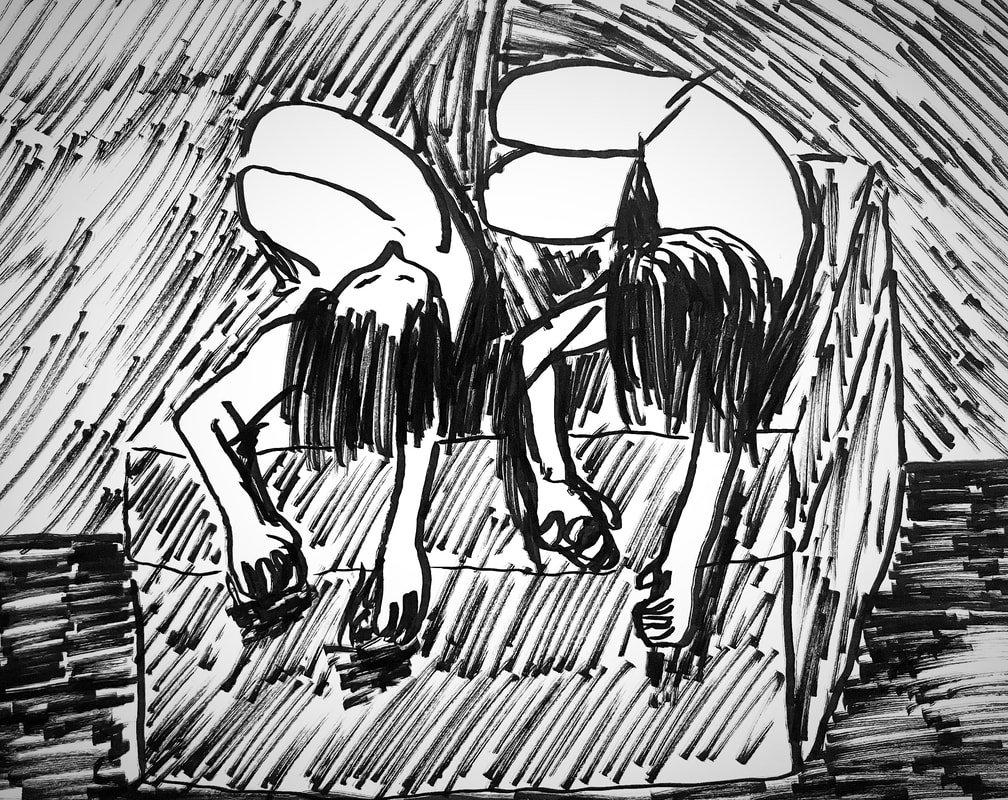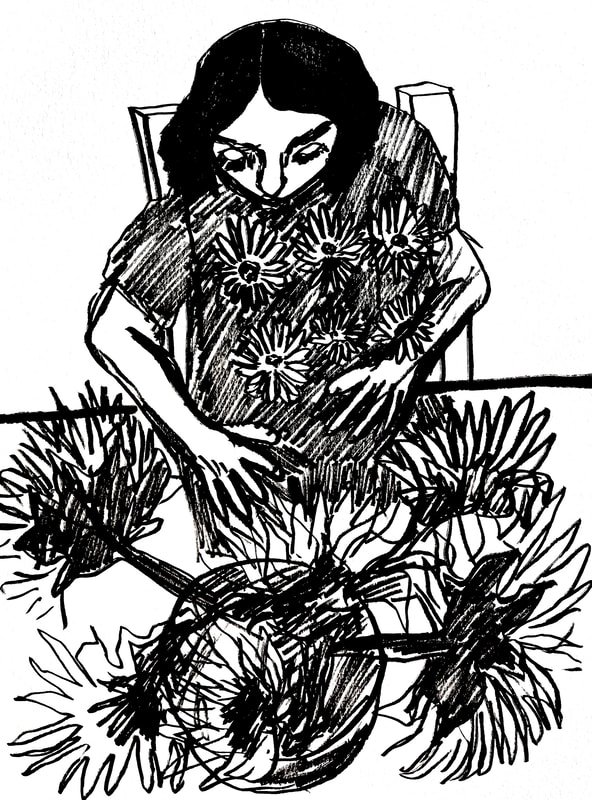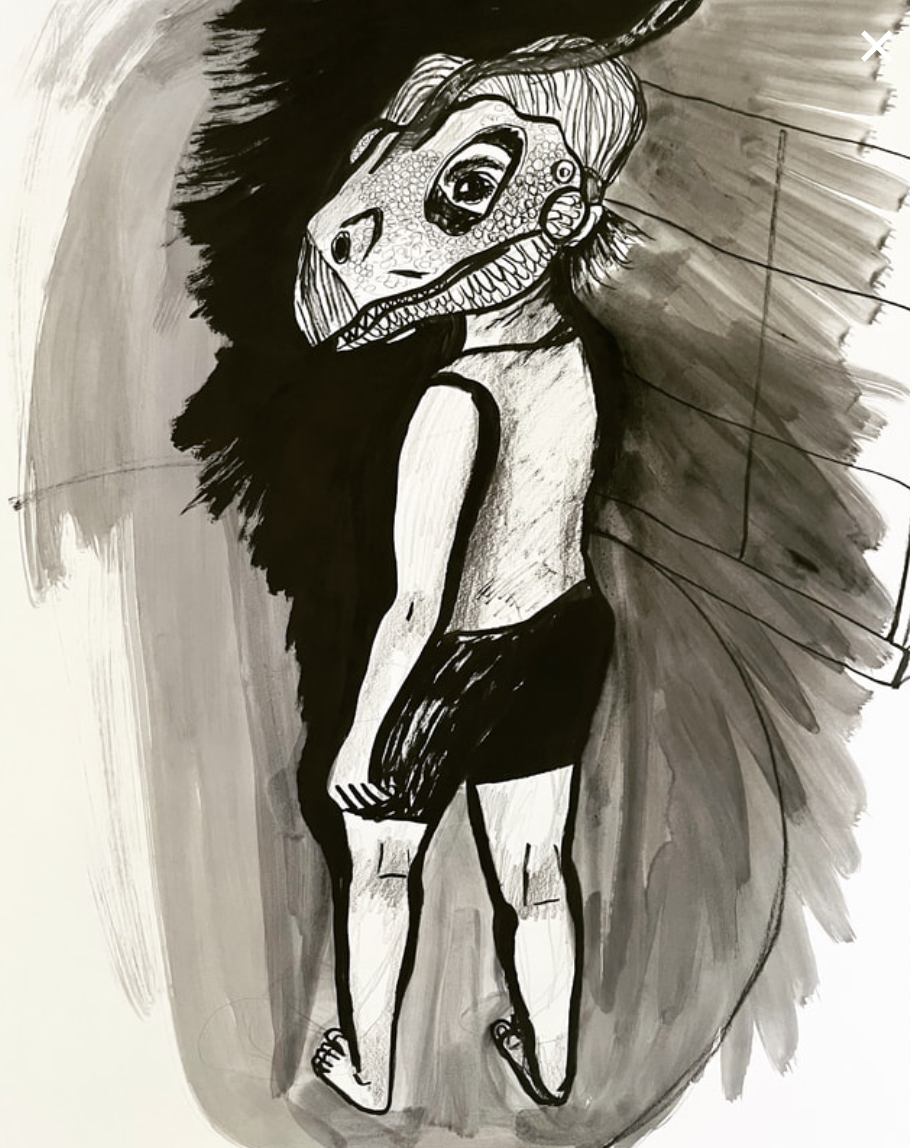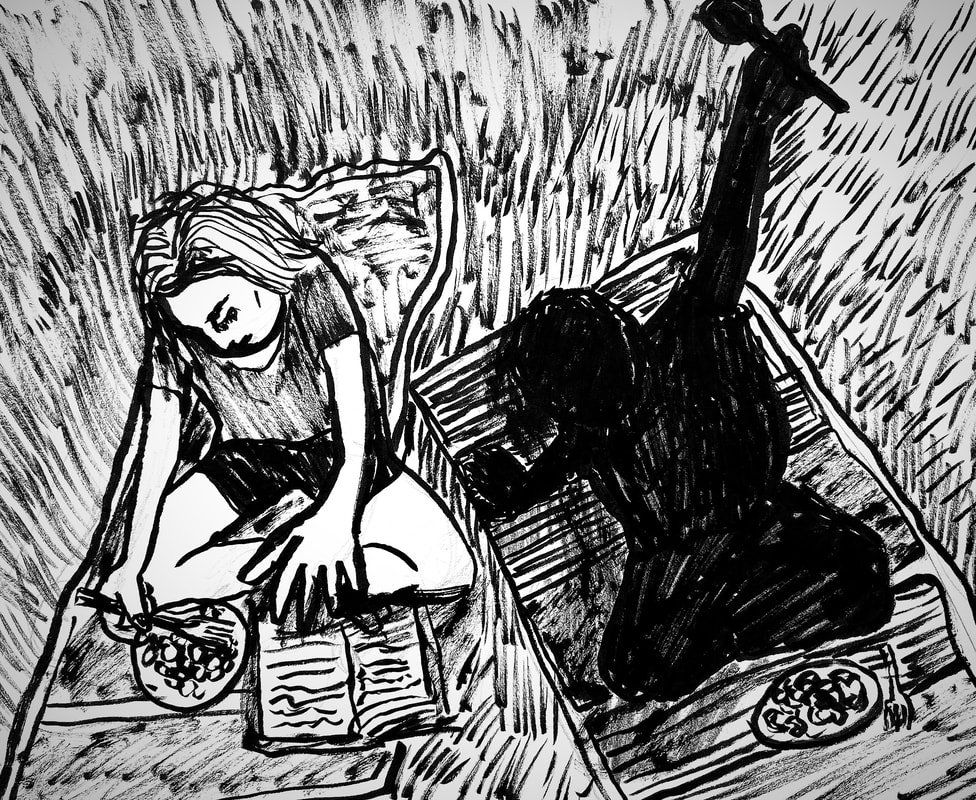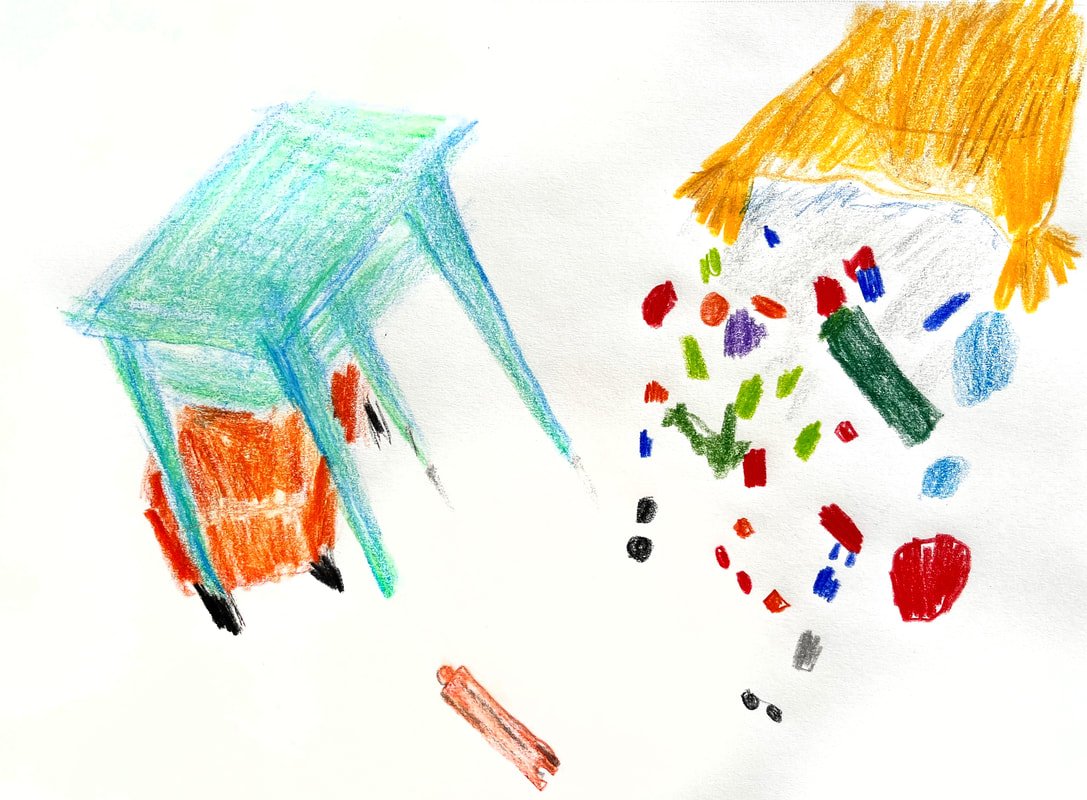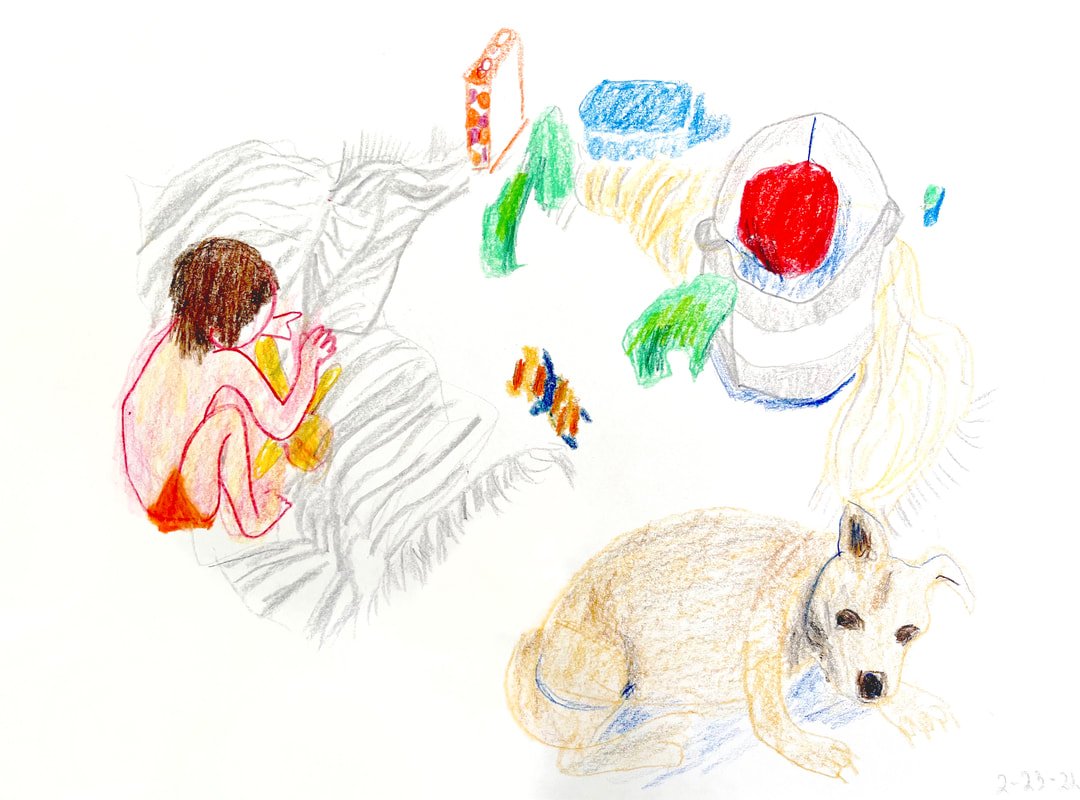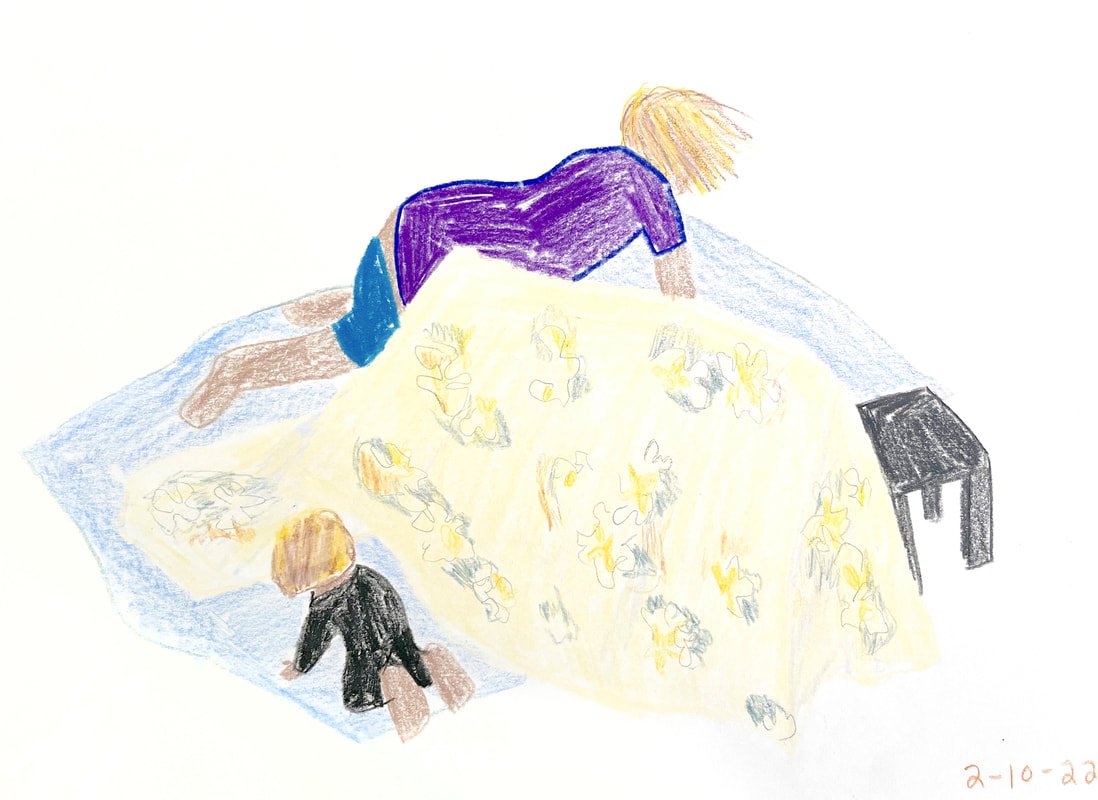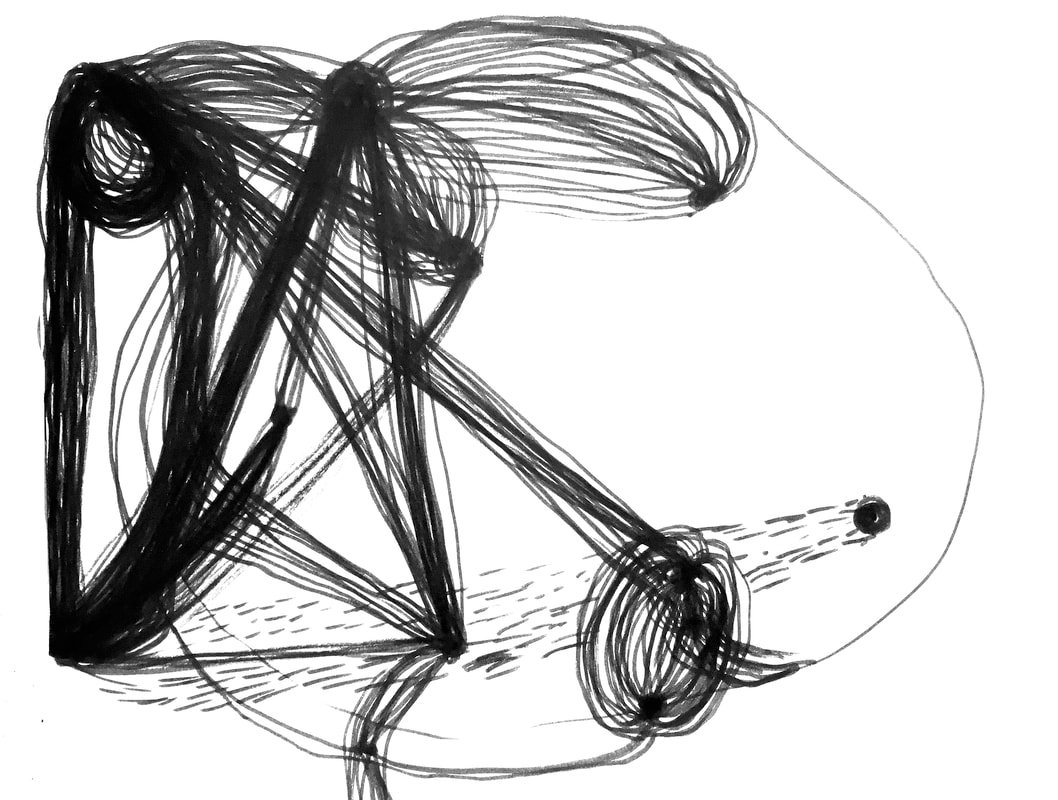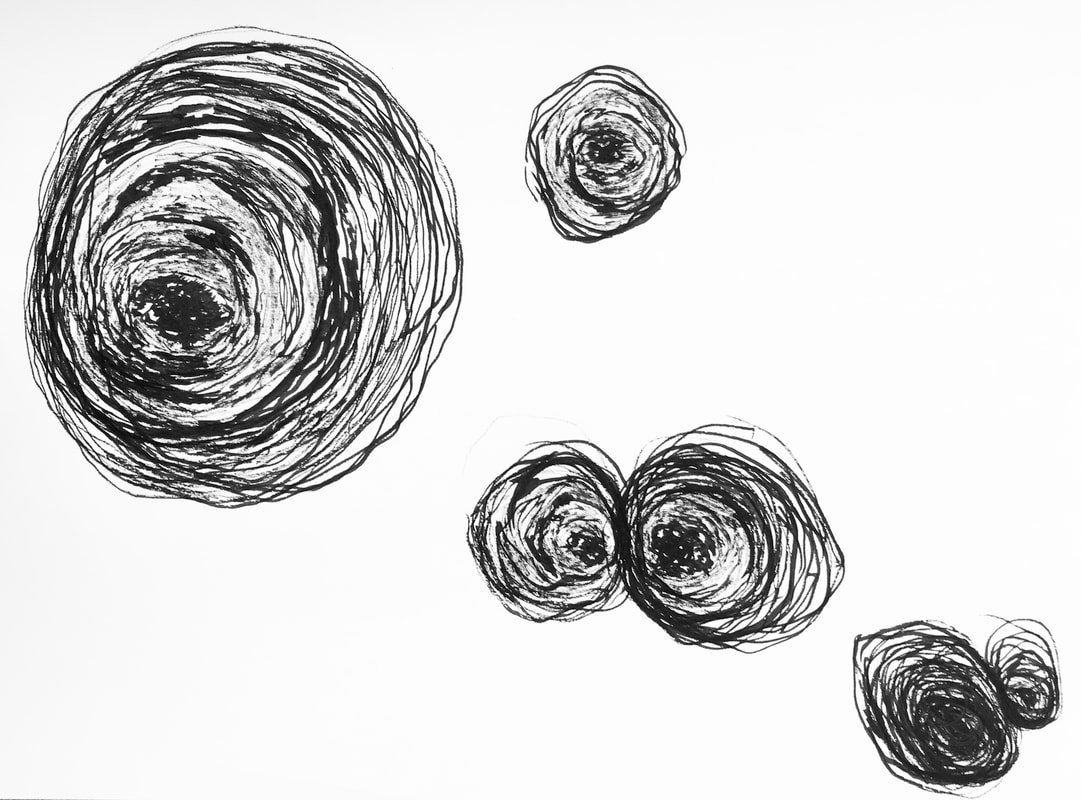Megan Hildebrandt
Nicolás Dumit Estévez Raful Espejo Ovalles Morel: Megan, I have had the pleasure to experience your work on an ongoing basis, mostly through your regular Instagram postings. One aspect of this that speaks to me is its connection to life, to the everyday, to the sacrality of the mundane at home: the piles of clothes to fold, the food being prepared in the kitchen, and the bed being used as a trampoline by Ernest! The space is yours.
Megan Hildebrandt: I am so honored to be given this platform to reflect on the work I make. The pace of life, when one has young children and a career, seems to be very fast. Moments like this allow me to pause and make space for reflection. I am truly grateful.
NDEREOM: Thank you for your kind words. I feel the same way about talking with you. When I engage your drawings and the concepts informing them, I immediately think of Mary Kelly and the Post-Partum Document. However, in your case there is something that transcends the conceptuality of the 1970s and infuse your drawings and animations with emotions and with a viscerality that speaks deeply of home. What would you say about your process?
MH: Thanks for that so much! When I make art, I am always flying by the seat of my pants. Whether working on a small drawing that I make after work at the kitchen table, or a hand-drawn animation that takes weeks that I come back to again and again – I always have a sense of “rush” when I am making. The creative zone I have always relied on appears readily– it’s like my mind and body say, “Ok, you have two hours before your next responsibility. There is no time for self-doubt. GO!” This is, I think, why I rely on ink for most of my drawings–ink is my best friend. Mistakes become something else, lines that initially did not fit alter the entire direction of the work. When I had my first child, she would pose for me for hours (if I gave her a book or tv!). Now with two, that is very rare. I am often snapping photos or videos of the both of them at the park, on a walk, or in our home. I then have a treasure trove of imagery to work from.
NDEREOM: Your children June and Ernest are central to the narrative that you shared with people like me, through drawings and animations. How do you go about issues of privacy? What are some of the family agreements that you might have in place as to how much art reveals about the day-to-day? I think that you do that so gently and yet I would like to hear directly from you.
MH: I am lucky that my husband, Peter Abrami, is also an artist. He deeply understands, applauds and protects my practice by giving me time and space to make (it goes both ways). The moments I choose to depict are ones that I believe are so specific, they become universal. For example, June and I watching cat videos on youtube while wearing beauty masks, or Ernest and June having a lunch picnic in our backyard that becomes a food fight. Children bring a lovely wildness to one’s life that I want to capture. I am most concerned that other parents – in particular, mothers – find themselves and their own families in the work. That they feel seen is of utmost importance to me.
NDEREOM: I recall babysitting for a dear friend. That was in the 1990s and so much has changed. People like me and my friend could buy weekly groceries in Manhattan with 25 bucks. I can only imagine what navigating parenthood must take in 2023 when food, rent, and clothing are out of the reach of most people in the United States. What are some of the home pleasures that you would share with parents who might be struggling and who might not have the resources that some of us do, either as single entities or as responsible for others?
MH: I think that parenting throughout the COVID-19 pandemic really did shift my perspective and make me a lot more grateful for what we as a family have. I think my husband’s big garden full of tomatoes, peppers, lettuce, basil, spinach and eggplants is very loved space in our home. It is a place of refuge for all four of us – Peter as he tends to his plants, the kids who act as his garden assistants (sometimes garden pests), and myself – I am usually out there sketching what I see.
NDEREOM: Weekends are the time when many of us can truly be ourselves. Some of us decide to disengage the systems and live for two or three days out of the constrains of office, teaching, and administrative work, to dream freely with our loved ones and outside the constrains of clockland. What is the meaning of the weekend for you as a creative and as a parent?
MH: Right now in my life, weekends mean mountains of laundry, making popcorn, taking family walks, and bringing my kids to the park. Sometimes we get lucky and get to attend an art opening. I do gather images all the time on the weekend – thank goodness for my iPhone. I will tell you I am always relieved when Monday comes, because the kids go back to school.
NDEREOM: What are your sources of inspiration for generating the work that you do? How do you carve out time to do it, and what role does this creative work play at home?
MH: Watching my children play, lounge, sleep, and eat. They are constantly inspiring me with their conversations too. I love the light sources in my current home, watching the dog sleep, our garden, the one inside plant I have managed to keep alive, watching the kids on their scooters from my porch. I also really enjoy trying to depict fatherhood in my works, so appreciate when Peter pauses so I can draw him with the kids.
NDEREOM: Thank you for bringing Peter to this conversation and for letting his presence permeate this dialogue. I can almost see him as we talk. How does the art that you do with your family bring your children forward into the world and invite them step out into life?
MH: What a great question! A lot of that remains to be seen. But I have witnessed some clues- June (10) has a deep understanding that artists are everywhere, that she is one, and she has attended art shows and been dragged to our art classrooms if her own school is closed since she was born. I believe being the oldest child of two artist parents has given her a glorious view of the world– she assumes that art is in everyone’s lives. Ernest (4) has just been in his second art show, and it was a delight listening to him invite his teachers and classmates to his opening. I think for him, it is a great way to practice socializing and growing his interpersonal skillset.
NDEREOM: I recently thought how one of the biggest tragedies that can happen to a being is to be disconnected from creativity, whether the person is a cook, a plumber, a crow, a teacher, or a dolphin. I cannot imagine myself living without this resource. How was your own creative self nurtured as a child and what continues to feed it now as an adult?
MH: I am really lucky because both of my parents encouraged creativity in different way. My dad is an architect, and he would sometimes bring me to his office – what a wonderful place that was, full of chemical smells, huge sheets of paper with very mechanical-looking homes and buildings drawn on them. He would bring those drawings home at night and work on them after dinner. I loved to watch him work. My mom has another amazing creative trait – excellent interpersonal skills, and a deep curiosity about the lives of other people. I cannot over-emphasize how much this has impacted me artistically, professionally and personally.
NDEREOM: I could talk with you for hours, and this feels good and complete to me, unless you have questions or would like to add anything else. Thank you so much for this dialogue. I will continue to enjoy your drawings and animations as they appear on my radar.
MH: This was a treat –so cathartic! Thank you for thinking of me.
All images and animations courtesy of Megan L Hildebrand
Megan Hildebrandt’s links: Website / UT at Austin Website / Instagram / Podcast
To watch animations click HERE
Megan Hildebrandt is a cancer survivor and recently had her second child. These life events have greatly impacted her creative practice. Confronting her own mortality at age 25 and then experiencing the fragility and strength of birth, she has become obsessed with tracking time – documenting the small, routine moments of life that loop and repeat. Hildebrandt wants to give the viewer intimate, personal moments that capture the both fleeting and endless seconds of being alive. Her work explores autobiography, the passage of time, illness narrative and recovery from trauma via figurative and abstract drawings and paintings. Hildebrandt attempts to recover time lost to cancer treatment, and to track the development of a new self and her young children. Her work serves as touchstones to mark a life both interrupted and reinvigorated.
Megan Hildebrandt received her BFA from the Stamps School of Art & Design in 2006, and her MFA in Studio Art from the University of South Florida in 2012. Hildebrandt has exhibited nationally and internationally, including: The Painting Center, New American Paintings, The Baltimore Museum of Art, The Museum of Contemporary Craft, Arlington Arts Center, Detroit Contemporary, HEREarts Center, Latitude 53, Johns Hopkins Medical Center, the LIVESTRONG Foundation, Hyde Park Art Center, The Torpedo Factory, and Collar Works.
In 2018, Hildebrandt received an Art Works grant from the National Endowment for the Arts for the Aesthetics of Health Course she developed for Interlochen Arts Academy. In 2022 Hildebrandt co-authored an article about adapting the Aesthetics of Health curriculum effectively for higher education during the pandemic in the American Medical Association Journal of Ethics. This course is now taught each spring at the University of Texas at Austin.
An artist, educator, and arts-in-health advocate, Hildebrandt currently lives and works in Austin, Texas, where she is Associate Professor of Practice in the Department of Art and Art History at The University of Texas.
